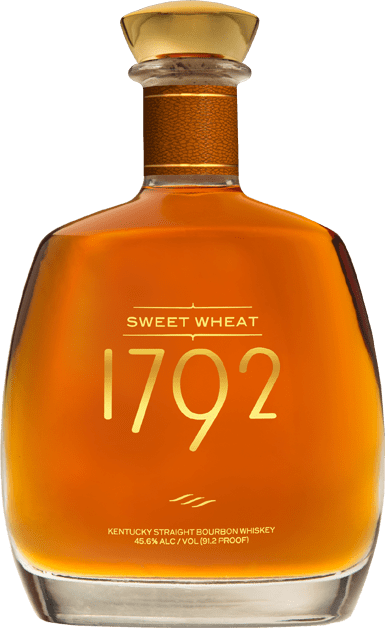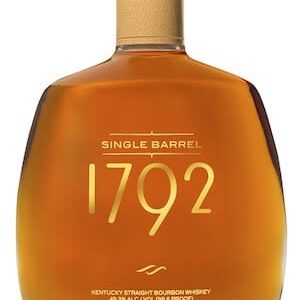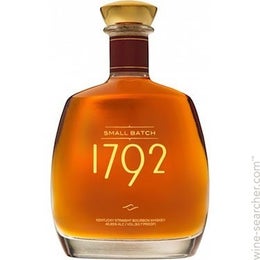1792 Sweet Wheat
$35 Original price was: $35.$30Current price is: $30.
1792 Sweet Wheat Bourbon
Experience the gentle allure of 1792 Sweet Wheat, a Kentucky straight bourbon with a wheat-driven mash bill. This smooth spirit unveils soft notes of honey, ripe fruit, and warm oak, culminating in a velvety, sweet finish. Ideal for those craving a refined, easy-sipping bourbon with a touch of elegance.
1792 Sweet Wheat Bourbon: The Ultimate Guide to the Elusive Whiskey
If you’ve been exploring the world of bourbon, you’ve likely heard whispers of a particularly hard-to-find bottle from the Barton 1792 Distillery: 1792 Sweet Wheat. This bourbon has achieved near-legendary status among enthusiasts, not just for its flavor, but for its elusivity. But what exactly is it, and does it live up to the hype? This comprehensive guide is designed to demystify 1792 Sweet Wheat bourbon for beginners and seasoned collectors alike. We’ll explore its unique recipe, its taste, why it’s so rare, and whether it’s worth the effort to find.
What is 1792 Sweet Wheat Bourbon?
Let’s start with the foundation. 1792 Sweet Wheat is a limited-release, straight bourbon whiskey and part of the celebrated 1792 lineup from the Barton 1792 Distillery in Bardstown, Kentucky. The “1792” name honors the year Kentucky achieved statehood, rooting the brand in American history.
What sets 1792 Sweet Wheat apart from almost every other bourbon in the 1792 family is its mash bill. The mash bill is the recipe of grains used to make the whiskey. While most bourbons use rye as the “flavoring grain” to balance the sweetness of the corn, 1792 Sweet Wheat replaces the rye with wheat. This makes it a “wheated” bourbon, a category known for producing softer, smoother, and sweeter profiles. The name “Sweet Wheat” is a direct and honest description of what you can expect inside the bottle.
The Prestige of the 1792 Family
Understanding 1792 Sweet Wheat means appreciating its place in a distinguished family. The Barton 1792 Distillery, with a history dating back to 1879, is known for quality and craftsmanship. The 1792 Sweet Wheat expression is one of several annual special releases, sitting alongside other sought-after bottles like the Full Proof and Single Barrel. Its status as a limited-release wheated expression is what drives its desirability and creates a frenzy whenever it hits shelves.
Tasting Notes: The Flavor of 1792 Sweet Wheat
The most important question for any bourbon is: what does it taste like? The promise of a “sweet wheat” profile is certainly delivered upon, offering a experience that is distinct from its spicier rye-based siblings. Here’s a detailed breakdown of a typical 1792 Sweet Wheat review based on consensus from experts and enthusiasts.
The Aroma (The “Nose”)
The first encounter with 1792 Sweet Wheat is often through its inviting aroma. Bring the glass to your nose, and you’ll likely find:
-
Pronounced Sweetness: The wheated recipe shines immediately with notes of brown sugar, honey, and caramel.
-
Baked Goods: A delightful scent reminiscent of fresh-baked bread, vanilla cake, and oatmeal cookies is common.
-
Subtle Fruit: Hints of apple, pear, and a touch of citrus add a layer of freshness.
-
Soft Oak: Unlike some bold, oaky bourbons, the wood presence here is gentle, providing a warm, nutty foundation without overpowering the sweeter notes.
The Flavor (The “Palate”)
On the palate, 1792 Sweet Wheat is known for its smooth and approachable character. It’s typically bottled at 91.2 proof, making it easy to sip without a strong alcohol burn.
-
Initial Sweetness: The sip begins with a wave of caramel, vanilla, and maple syrup. The wheat grain provides a creamy, smooth sweetness that is less sharp than corn-based sweetness.
-
Developing Complexity: As the initial sweetness settles, flavors of baked apple, honey-nut cereal, and a touch of cinnamon emerge.
-
Mouthfeel: The texture is often described as soft, round, and creamy. It coats the palate gently, allowing the flavors to develop slowly and gracefully.
The Finish (The “Aftertaste”)
The finish is the lasting impression the bourbon leaves, and for 1792 Sweet Wheat, it’s a gentle goodbye.
-
A medium-length finish that is remarkably smooth.
-
The sweet notes of vanilla and honey linger pleasantly.
-
It ends clean and soft, with very little of the peppery or dry note that rye often imparts. There’s just a whisper of warm oak and toasted grain.
Pro Tip for Beginners: To fully appreciate the delicate flavors of 1792 Sweet Wheat, try sipping it neat from a Glencairn glass or a standard rocks glass. Its lower proof and smooth profile make it an ideal bourbon to enjoy without any water or ice, though a single large ice cube can also be a delightful way to experience it.
The Hunt: Why is 1792 Sweet Wheat So Hard to Find?
This is the central question for anyone interested in 1792 Sweet Wheat. Its reputation is built as much on its scarcity as its flavor. There are a few key reasons for this:
-
Limited Annual Release: Unlike the core-range 1792 Small Batch, 1792 Sweet Wheat is not produced year-round. It is released in limited batches once a year, creating a finite supply.
-
High Demand for Wheated Bourbons: The success of other wheated bourbons like Maker’s Mark and the infamous Pappy Van Winkle has created a massive demand for anything in that category. 1792 Sweet Wheat is seen as a more accessible (in theory) entry into this desirable style.
-
Collector Frenzy: Its limited nature and high scores from reviewers have made it a “trophy bottle” for collectors. Many people buy it not just to drink, but to own and display, which further reduces the number of bottles available for casual drinkers.
1792 Sweet Wheat Price and Value Analysis
Let’s talk numbers. The 1792 Sweet Wheat MSRP (Manufacturer’s Suggested Retail Price) is surprisingly reasonable, usually set between $40 and $50. At this price, it represents an outstanding value for a limited-release, specialty bourbon.
However, the reality of the market is very different. Due to the reasons listed above, you will rarely, if ever, find it at MSRP. On the secondary market, prices for 1792 Sweet Wheat can easily soar to $150 to $300 or more, depending on the year and your location.
So, is it worth it?
-
At MSRP: An absolute “yes.” It’s a fantastic, unique, and delicious bourbon that is well worth its original price.
-
At Secondary Market Prices: This is a personal decision. While it is an excellent whiskey, few bottles are truly worth a 400% markup. Paying hundreds of dollars is more about the thrill of the hunt and ownership than pure flavor value. There are many other fantastic wheated bourbons available at retail price that offer a similar experience.
How Does It Compare to Other Wheated Bourbons?
To understand 1792 Sweet Wheat’s place in the world, it’s helpful to compare it to other well-known wheated expressions:
-
vs. Maker’s Mark: Maker’s Mark is the benchmark for accessible wheated bourbons. 1792 Sweet Wheat is often considered a step up in complexity, with a richer and more layered flavor profile, though both are exceptionally smooth.
-
vs. W.L. Weller Special Reserve: Both are highly sought-after wheated bourbons. Weller tends to have a brighter, more grain-forward profile, while 1792 Sweet Wheat is often described as softer and more dessert-like.
-
vs. Larceny: Larceny is another excellent and more available wheated bourbon. 1792 Sweet Wheat is typically seen as a more premium and limited alternative.
For those building a bourbon collection, understanding these differences is key. You can learn more in our guide to the different types of bourbon mash bills.
How to Find a Bottle of 1792 Sweet Wheat
Finding a bottle requires strategy and patience. Here are a few tips:
-
Build Relationships: Get to know the owners or managers of your local liquor stores. Let them know you’re interested in limited releases.
-
Enter Lotteries: Many stores use lotteries to sell allocated bottles like 1792 Sweet Wheat fairly. Make sure you’re on their email lists.
-
Check Online Retailers (where legal): Some online platforms may get allocations, but be prepared for high prices and quick sell-outs.
-
Travel: Sometimes, smaller towns outside major metropolitan areas receive allocations that sit on the shelf a little longer.
For the most accurate information on releases, the official Kentucky Bourbon Trail website often features news from distilleries like Barton 1792.
1792 Sweet Wheat Review: The Final Verdict
After considering all the factors, what’s the final word in this 1792 Sweet Wheat review?
The Bottom Line: 1792 Sweet Wheat is a truly excellent bourbon. It delivers exactly what it promises: a soft, sweet, and incredibly smooth drinking experience that is approachable for beginners yet complex enough for connoisseurs. The hype around its flavor is largely justified.
Who is it for? It’s perfect for anyone who prefers smooth, sweet spirits over spicy ones. It’s an ideal sipping bourbon for a quiet evening. If you can find it at or near MSRP, it is an unmissable purchase.
Who might it not be for? If you crave the bold, spicy kick of a high-rye bourbon, the gentle nature of Sweet Wheat 1792 might underwhelm you. Furthermore, if you are not interested in the “hunt,” the effort and potential high cost may not be worth it when other great wheated bourbons are readily available.
In conclusion, 1792 Sweet Wheat is a masterpiece of its style. It’s a testament to Barton 1792’s skill and a bottle that deserves its esteemed reputation, even if that reputation makes it frustratingly difficult to own.
Frequently Asked Questions (FAQ)
1. Is 1792 Sweet Wheat being discontinued?
No, there is no official word from Barton 1792 Distillery that 1792 Sweet Wheat is being discontinued. It remains a part of their annual limited-release schedule. However, its production is inherently limited, which contributes to the perception that it’s been “discontinued” when it’s not on shelves.
2. What is the proof of 1792 Sweet Wheat?
1792 Sweet Wheat is bottled at 91.2 proof (45.6% alcohol by volume). This is a relatively approachable proof point that allows the delicate sweet and wheaty flavors to shine without being overshadowed by alcohol heat.
3. How is 1792 Sweet Wheat different from 1792 Small Batch?
The difference is in the mash bill. The 1792 Small Batch uses rye grain, which gives it a spicy, peppery character that balances the sweetness. 1792 Sweet Wheat replaces the rye with wheat, resulting in a much softer, smoother, and sweeter profile with no rye spice.
4. What is a fair price to pay for 1792 Sweet Wheat?
The fair price is the official 1792 Sweet Wheat MSRP, which is between $40 and $50. While it is often sold for much more, paying significantly above that is a personal choice based on how much you value owning the bottle. We always recommend trying to find it at retail first.
5. Is 1792 Sweet Wheat better than Weller?
“Better” is subjective. Both are excellent wheated bourbons. 1792 Sweet Wheat is often described as softer and more dessert-like, while Weller Special Reserve can have a brighter, more grain-forward character. The “best” one is a matter of personal taste preference.
Be the first to review “1792 Sweet Wheat” Cancel reply
Related products
1792 Collection
1792 Collection







Reviews
There are no reviews yet.